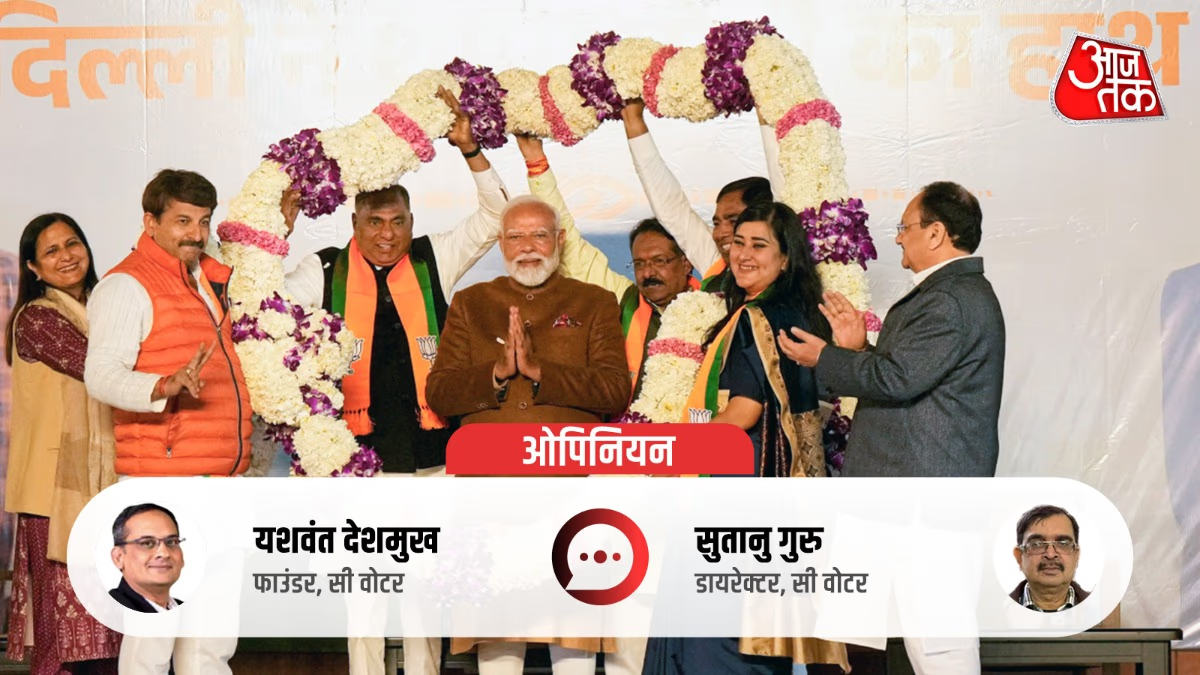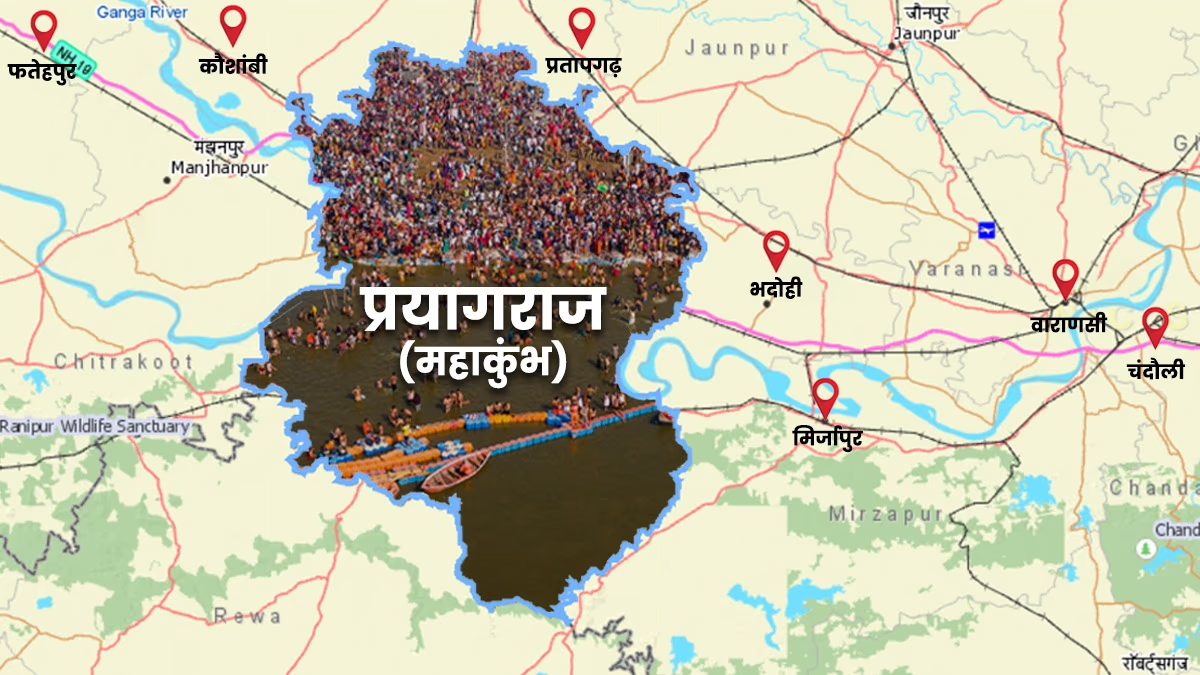Every election is akin to a fascinating battle in the realm of politics. The Delhi Assembly elections have once again highlighted that the best strategy to fight and win involves crafting a solid plan and executing it with precision and efficiency on the battleground. Once again, the Bharatiya Janata Party has shown that when it comes to implementing concrete strategies, there is no match for BJP in the Narendra Modi era.
Since 1998, 'Delhi Dur Ast' has become a serious warning for the party. Even during the grand election campaign led by Amit Shah, electoral victory in Delhi remained an elusive dream for BJP, as the Aam Aadmi Party led by Arvind Kejriwal continued its winning streak here.
Target of Increasing Vote Share by 15%
After facing continuous electoral defeats, BJP was in a dilemma. While about 55% of voters in Delhi chose BJP in the Lok Sabha elections, more than 15% of this group shifted towards AAP in the assembly elections. This dilemma formed the basis of BJP's strategy to convince this 15% vote to stay with the party. The straightforward approach was to reduce AAP’s vote share by around 10% and increase BJP’s vote share by the same proportion.
On paper, anyone can have a solid strategy. For instance, Congress aimed to achieve a double-digit vote share to remain politically relevant in Delhi. AAP’s strategy to maintain a 54% vote share (as in 2015 and 2020) largely remained intact. Yet, both failed, while BJP's strategy worked like magic in Delhi. Some refuse to credit the strategies alongside Modi-Shah’s leadership. However, since 2014, the victories in various elections across the country compel any impartial commentator to advise political parties to follow the strategy adopted by BJP.
In the 2024 Lok Sabha elections, voters warned BJP by giving fewer seats, yet the narrative changed in less than a year. Since then, BJP has secured three seemingly impossible victories, including Haryana, Maharashtra, and now Delhi. However, the loss in Jharkhand reminded BJP that no person or organization is infallible.
Step-by-Step Progress by BJP
Several elements are required for a successful strategy. These include adequate financial resources, a disciplined and committed group of soldiers, generals, and staff officers, the use and deployment of surprising weapons during the peak of the battle. Most importantly, the ability to change the strategy quickly.
In Delhi Assembly elections, all these factors worked well together. The availability of financial resources has not long been a challenge for BJP. It has ample funds to outspend any competitor when necessary. However, as demonstrated by the failures in some elections, particularly during the 2024 Lok Sabha elections, it is clear that spending a massive amount of money alone is not enough to win elections.
Engagement of Allied Organizations
The second crucial element for a successful strategy is the ability to deploy committed soldiers. This is an area where no other party can match BJP’s capability to utilize the resources and manpower of the Sangh Parivar. The days of overconfidence in preparation for the 2024 Lok Sabha campaign are long gone. When party president J.P. Nadda inadvertently conveyed that this future-ready BJP might not need RSS cadre, personal interventions by Narendra Modi ensured the disgruntled workers returned to the streets, knocked on doors, and quietly spread the message while maintaining trust.
In this Delhi campaign, it appears that RSS workers have conducted over 50,000 dialogue sessions with small groups. All other organizations of the Sangh Parivar, including ABVP, Bajrang Dal, and Bharatiya Mazdoor Sangh, were tasked to keep a constant focus on their target groups.
To prevent the organization from diverting from its purpose, the BJP deployed staff officers to transport its leaders to pre-decided areas like a well-coordinated team. Those managing outfits like Bajrang Dal knew where the presence and rhetoric would work and where it might backfire. BMS members were deployed in factory areas and among other workers who had become staunch supporters of Arvind Kejriwal.
Rallies by BJP's Heavyweights
Similarly, every day, at least a dozen senior BJP leaders were actively campaigning in Delhi, leading processions, organizing rallies, and addressing numerous meetings. Delhi, being a city, made this task easier for BJP. During the campaign, major BJP leaders from UP, Bihar, West Bengal, Assam, Telangana, Tamil Nadu, and Odisha remained engaged in various localities.
One very crucial element of a successful strategy is the agility with which top military officials can change strategy amidst an intense battle. Similarly, in the early phases of the campaign, BJP focused on corruption allegations against Arvind Kejriwal and his so-called 'Glass Palace,' making it a central focus.
Shifted Focus from 'Glass Palace'
But by early January, internal feedback from surveys and booth-level workers began to pour in, indicating that corruption allegations failed to influence the lower class and poor voters, who remained committed and loyal to AAP. The feedback was clear: merely branding Kejriwal and AAP as corrupt wouldn’t increase BJP’s vote share by 10%. Within days, the strategy shifted focus to issues like roads and water. Of course, some leaders continued the 'Glass Palace' rhetoric. But both workers and leaders began raising issues of poor road conditions, piles of garbage, open sewer lines, lack of clean water, and pollution in the Yamuna.
In addition, grassroots and booth-level workers spread the message of how AAP had control over MCD. The citizens of Delhi were long troubled, and the situation had reached a point where discomfort was turning into anger. This anger was sufficient to swing a portion of the lower-class vote towards BJP. As shown by the final vote share tally, BJP achieved a nearly three percent vote share lead over AAP, which resulted from some middle-class voters switching their allegiance due to this boiling anger.
'Tax Relief as the Ultimate Weapon'
Finally, a successful strategy also implies that the top military officials have a hidden and lethal weapon to use during the climax of the battle. For this final assault, Narendra Modi chose Finance Minister Nirmala Sitharaman to wield the ultimate weapon of income tax relief. The timing was favorable, as Delhi's voting was scheduled less than a week after the Union Budget announcement. A major challenge for BJP, as seen during the Lok Sabha elections, was the sense of disappointment and disillusionment among middle-class voters. Survey by C-Voter highlighted that the middle class was unhappy with their living standard and not very optimistic about their future. Nonetheless, BJP needed this voter base to turn out in large numbers during the elections.
The 'Brahmastra' unleashed by Finance Minister Sitharaman was the income tax relief, offering total exemption for all citizens earning up to one lakh rupees per month. It was almost a dream come true in Delhi, where millions work as salaried employees in both central and state governments, as well as the private sector. The tax exemption thrilled them, ensuring the BJP's target of increasing its vote share by 10% was largely achieved.
If the rest of the political parties do not learn from Delhi's election on how to craft and implement precise strategies, they will allow BJP to continue dominating them. The same budget that announced the income tax relief also offered several incentives for Bihar. With Delhi elections now concluded, BJP's electoral machinery is now working on strategies to maintain its power in Bihar in November 2025.




